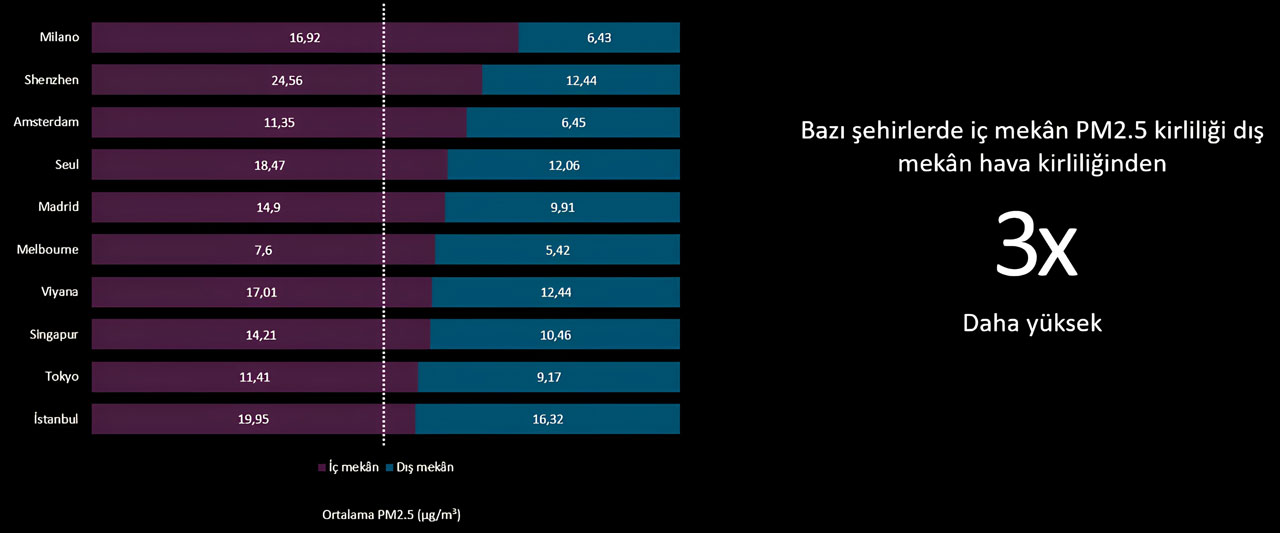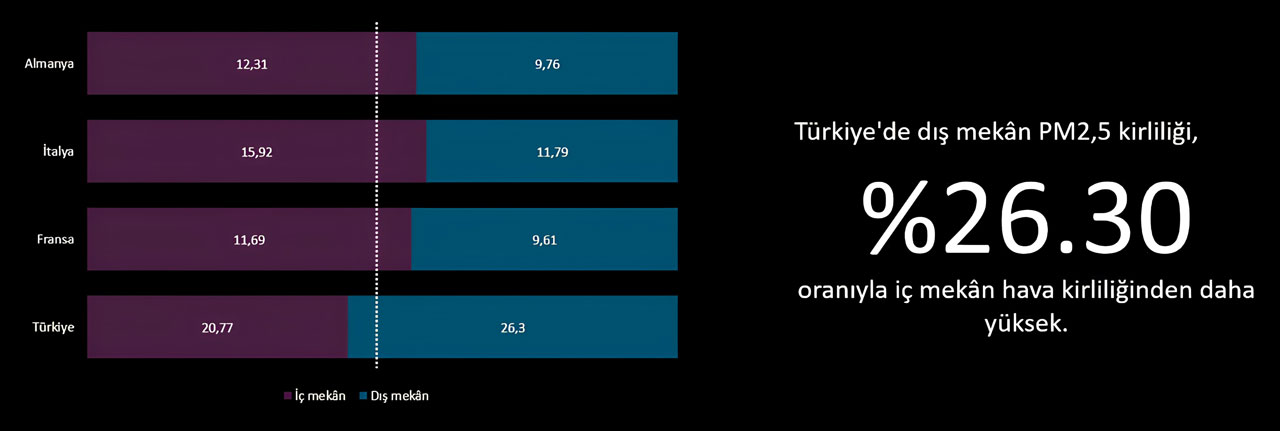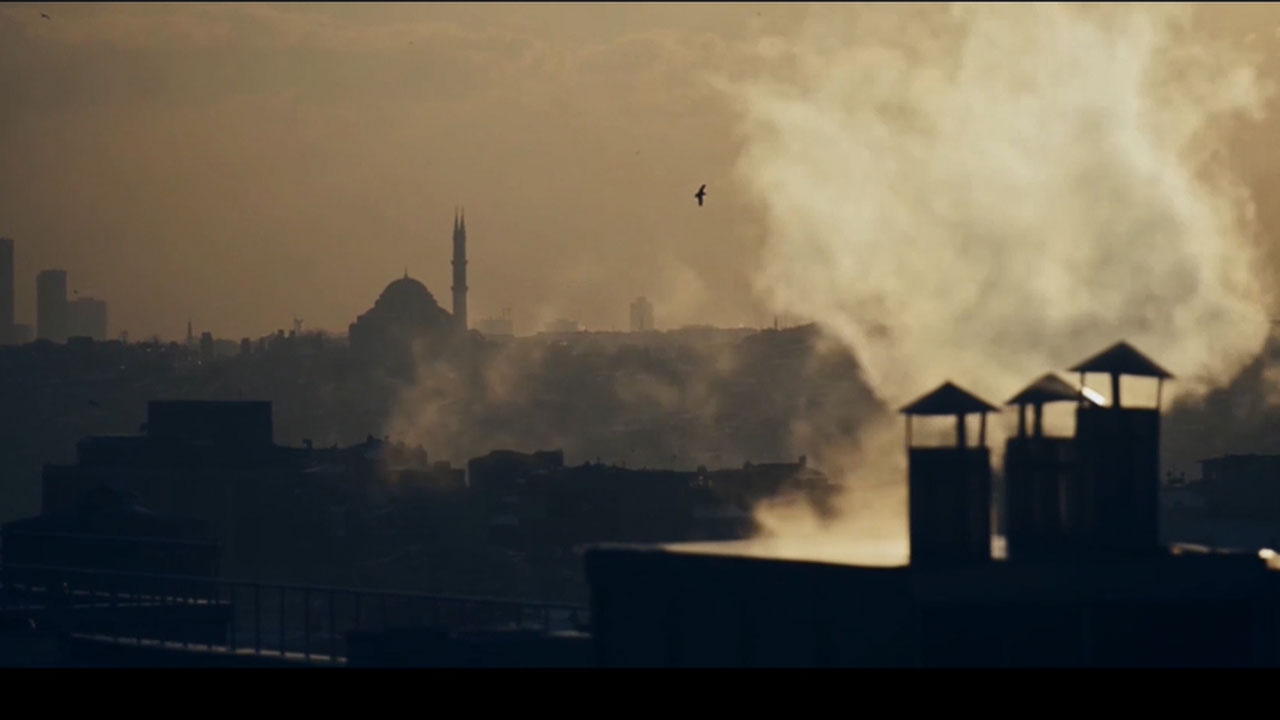As part of its Global Air Quality Linked Data project, Dyson examined data from more than 2.5 million Dyson air purifiers around the world and shared the results.
Although the first thing that comes to our mind when air pollution comes to mind is outdoor air pollution, indoor air pollution is also a very serious problem. Dyson, who wants to draw attention to this issue, collected data collected by Dyson air purifiers around the world. indoor air quality data By analyzing pollution into gases, particles and pollutants, it profiled trends over days, months, seasons and throughout the year.
Data from all air purifiers connected to the MyDyson app exceeds half a trillion data points and produces a precise map of indoor air quality globally to help understand and raise awareness of indoor air pollution.
The research focuses on two types of pollutants:
In fact, a lot of data was collected within the scope of the project, but PM2.5 And Volatile Organic Compounds (VOCs) Two pollutants called are in focus.
PM2.5 refers to particles with a diameter of 2.5 microns, which is 1/25 of the size of a typical human hair. These particles It cannot be seen with the naked eye and can be breathed. Among the sources; wood stoves, gas cooking and heating systems, pollen, pet hair and dust.
VOCs are chemicals that can be emitted from products such as deodorant and body spray, candles, furniture and flooring, as well as from activities such as cleaning or cooking. Gas pollutants such as Benzene and Formaldehyde it states.
Indoors in Istanbul are more polluted than outdoors!

Considering P.M2.5 values, indoor air pollution is higher than outdoor air pollution in most countries. In Turkey, in general indoor air pollution is lower than outdoor air pollution. However, in Istanbul, the opposite situation exists and the indoor air is more polluted than the outdoor air. Istanbul is ranked as the 10th city with the highest P.M2.5 values among the cities in the research.
Winter months are the dirtiest months:

Winter months are the dirtiest months due to the fact that we spend more time at home, the windows are generally closed, and the heaters are on.
According to the research, the month with the highest air pollution in Turkey is December. For Istanbul, it is February. Istanbul’s annual average PM2.5 level is Four times the WHO annual exposure guideline. While national average data reached 5.5 times the WHO guideline in December; In Istanbul indoor air quality data, it reaches 5 times the WHO exposure guideline in February. It is almost 5 times higher in December, January and March.
Türkiye is the most polluted country in Europe in terms of annual average PM2.5:

Looking at the data globally, when countries are ranked according to their average PM2.5 levels, looking at the annual averages of indoor PM2.5 in all countries, it is seen that the WHO annual exposure guideline (5 µg/m3) is exceeded by many countries. PM2.5 annual averages;
- India 11 times
- China 6 times
- Türkiye and UAE 4 times
- South Korea, Romania, Mexico, Hong Kong SAR and Italy are exceeded by 3 times.
When the PM 2.5 values of the countries are examined annually, Turkey is among the 10 countries with the highest values along with India, China, UAE, South Korea, Romania, Mexico, Hong Kong SAR, Italy and Poland. 3rd place in the world positioning.
Turkey is also the country with the highest PM 2.5 value among European countries. In Europe, Turkey is followed by Romania (6th), Italy (9th) and Spain (14th).
Türkiye is among the countries with the highest VOC values:

Unlike PM2.5, annual VOC levels according to Dyson air purifiers The countries with the highest rates are European countries. Austria tops the list, followed by Romania, Germany, Switzerland, Poland and Turkey. Italy is ranked 8th and Ireland is ranked 10th.
Many countries that rank high for average annual PM2.5, such as Thailand, UAE, Taiwan, Malaysia, Hong Kong SAR and South Korea, are not in the top half of the list when looking at annual VOC levels. The USA, France, Spain and Denmark rank higher.
European cities are also exposed to high indoor VOC levels compared to other regions. Munich is the top ranked city, followed by Beijing, Cologne, Berlin and Vienna. While only Beijing ranks among the top five cities for both annual PM2.5 and VOC, Delhi, Istanbul, Shanghai and Mexico City are in the top ten for average levels of both types of pollutants.
The top 10 European countries in order of indoor VOC levels:
- Austria
- Romania
- Germany
- Switzerland
- Poland
- Türkiye
- India
- Italy
- Chinese
- Ireland
Evening pollution is higher than at other times of the day:

In 30 of the 37 countries examined, While indoor PM2.5 levels reach their highest level in the evening and night hours; This corresponds to the time most people spend at home rather than at work, school or elsewhere. This suggests that a longer, dirtier period may lead to increased exposure to PM2.5 in homes.
Globally, peak hours are between 6pm and midnight in most geographies. In South East Asia (Thailand, Philippines, India), the dirtiest hours fall between 7 am and noon. South Korea and Mexico are two other notable exceptions, with the highest pollution levels seen between midnight and 7 a.m. and between 9 a.m. and 3 p.m., respectively.
In a typical 24-hour period, some geographies spend more than 50 percent of the day above the World Health Organization’s recommended daily exposure guideline for PM2.5 (15 µg/m3). These countries include China, India, South Korea, Mexico, UAE and Turkey. Homes in Shanghai, Beijing, Shenzhen, Delhi, Mumbai, Vienna, Mexico City, Dubai and Istanbul will all expect 24-hour clock time during 2022. more than 50 percent above WHO guidelines is going through.
Berlin, Rome, Milan, Madrid and the national average in Poland and Romania all spend part of a day exceeding WHO guidelines for daily PM2.5 exposure It shows that he went through it.
Automatic mode is used at low rates worldwide:

Globally, Dyson air purifiers only 8 percent spends more than three-quarters of the time in automatic mode (where the machine constantly monitors air quality and automatically responds to changing pollution levels). This shows that in homes around the world, Dyson air purifiers are not being used to automatically manage household pollution incidents.
The US leads in the percentage of cleaners in automatic mode (14%), with Chicago topping the city list, followed by New York, Toronto and Los Angeles. While users in Turkey mostly prefer to use air purifiers in manual mode, the proportion of those using them in automatic mode quite low It is observed that.
